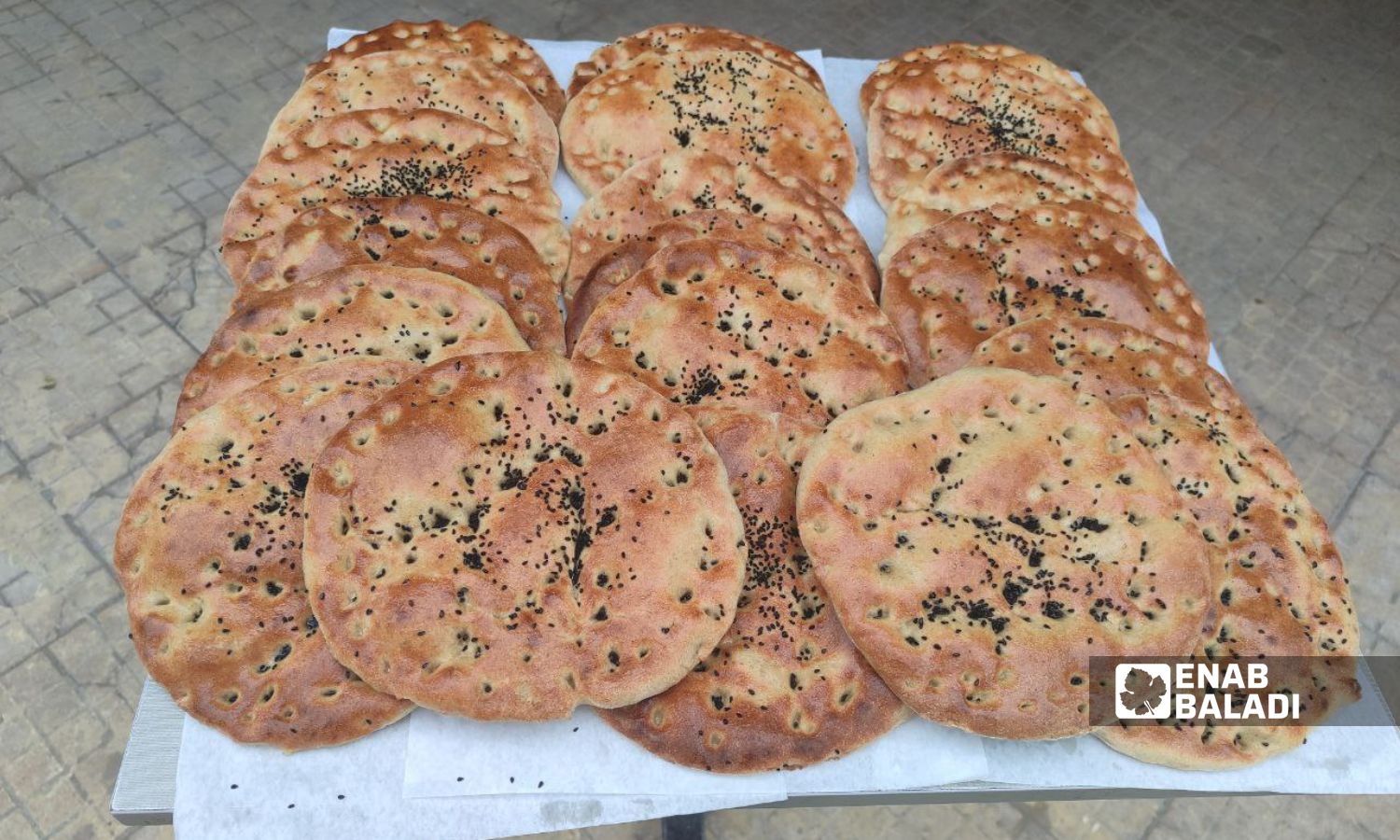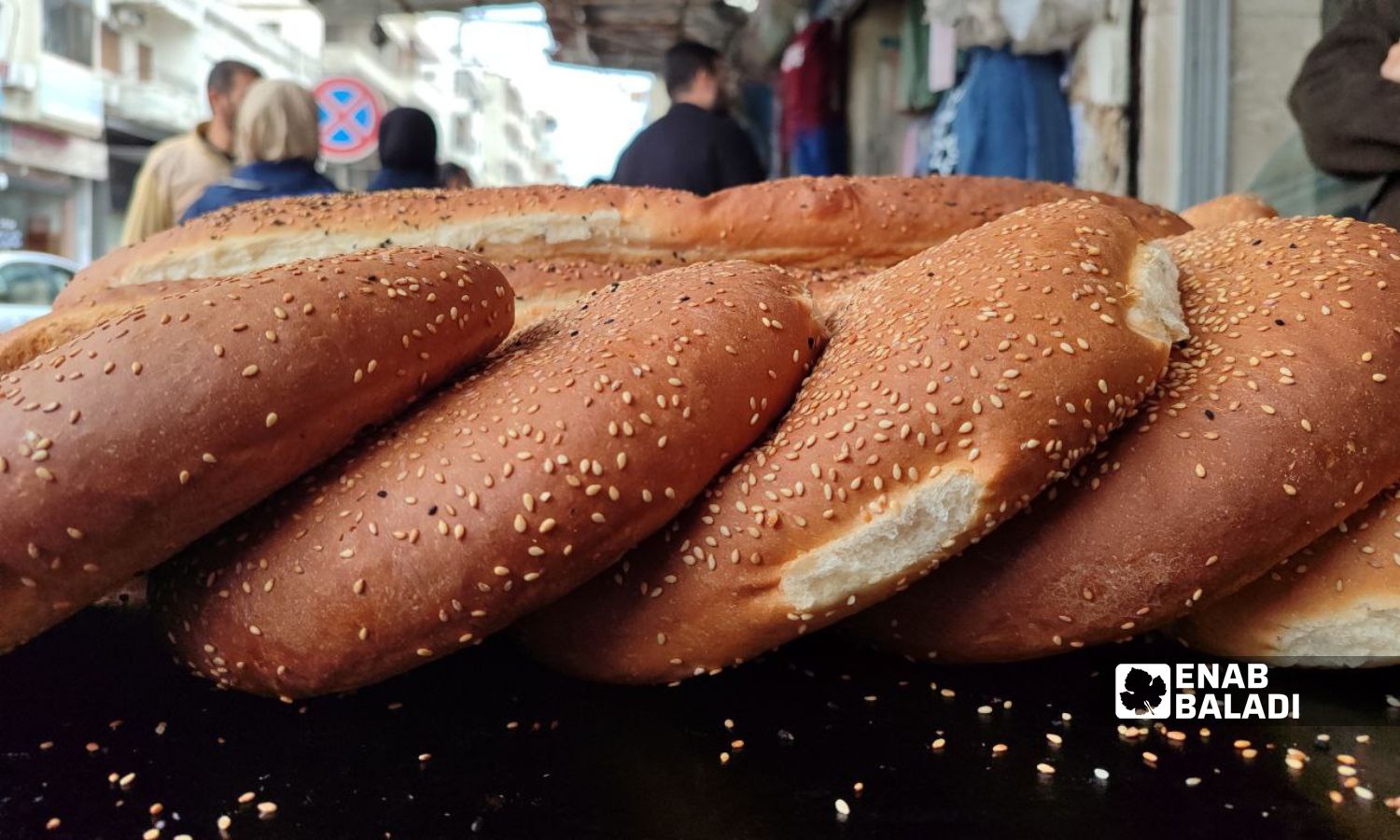



This year, the prices of maarouk bread have risen significantly, accompanied by a reduction in size, rendering it unaffordable for a large segment of Latakia residents, most of whom prioritize basic food essentials over other items.
Samar (43 years old), a public sector employee and mother of four with the eldest being nine years old and the youngest two and a half, said that she was accompanied by two of her children on a trip to the vegetable market to buy iftar necessities when they eagerly requested her to purchase maarouk, which was on display almost everywhere. Upon inquiring about the price, she was surprised.
The lady paid 8,000 Syrian pounds (one dollar is equivalent to 14,000 pounds) for a cheese maarouk so small in size that it barely suffices for one person, and she brought it home to split among her four children.
Samar mentioned that the bakery she bought from is considered to have average prices, located in the Seventh Project neighborhood, and added that there are many types available, such as chocolate maarouk for 15,000 pounds, and raisins maarouk for 20,000 pounds, besides many other high-priced, small-sized varieties.
The lady pointed out that the prices of maarouk have doubled this year, as last year the size of a maarouk was reasonable, and its price ranged only between 2,000 and 8,000 Syrian pounds.

Maarouk for sale in front of a shop at Sheikh Daher Square in Latakia – March 18, 2024 (Enab Baladi/Linda Ali)
Khaled (46 years old), a government employee from the al-Sulaibiya neighborhood, purchased three maarouks at once since the beginning of Ramadan on March 11, and paid 42,000 pounds for them, he said.
He added that although this type of pastry is essential during the holy month, this year he could not afford to buy it on a daily basis and might reconsider buying it once or twice more until the end of Ramadan.
On a tour of maarouk or Ramadan bread prices in the markets of Latakia, prices varied greatly between shops. In bakeries located in the central neighborhoods of Sheikh Daher, al-Sulaibiya, and al-Annabeh, the prices ranged between 4,000 and 15,000 pounds.
Prices ranged between 12,000 and 25,000 pounds in the Seventh Project and al-Raml al-Shamali neighborhoods, and they rise even more inside the chocolate and fruit salad stores, registering between 20,000 and 38,000 Syrian pounds, depending on the filling, whether it be cream, fruits, chocolate, strawberries, or bananas.
The main characteristic shared by all maarouk types is their small size, where the size of a single piece hardly exceeds the size of a hand, while it tends to get slightly smaller in fruit salad shops despite its higher price.
Many women have resorted to making maarouk at home, like Lamis (41 years old), who prepared a small batch as a trial, costing her no more than 25,000 pounds for half a kilo of flour, two glasses of milk, and some flavorings including coconut. The result was six medium-sized maarouk pieces.
The lady confirmed that her children loved the taste, even though it was somewhat different from the maarouk available in the market.
Maarouk, also known as Ramadan bread, is only sold during the fasting month and is usually consumed with a cup of tea after the iftar meal.
In the past, it used to be plain (without any additions) or with dates, but in recent years, it has been available with a variety of fillings, which contributed to a significant price increase in conjunction with the rise in prices of its ingredients.
With the advent of Ramadan, most commodity prices have risen, and the increase in the value of the Syrian pound against the US dollar has not been reflected in prices, which have not decreased despite the dollar’s fall after reaching more than 15,500 pounds last February.
Residents in Syria are living in a deteriorating economic and livelihood situation. The minimum government salary in regime-controlled areas is around 279,000 pounds, while the average cost of living exceeds 10.3 million Syrian pounds, and the minimum cost of living is 6.5 million pounds.
if you think the article contain wrong information or you have additional details Send Correction